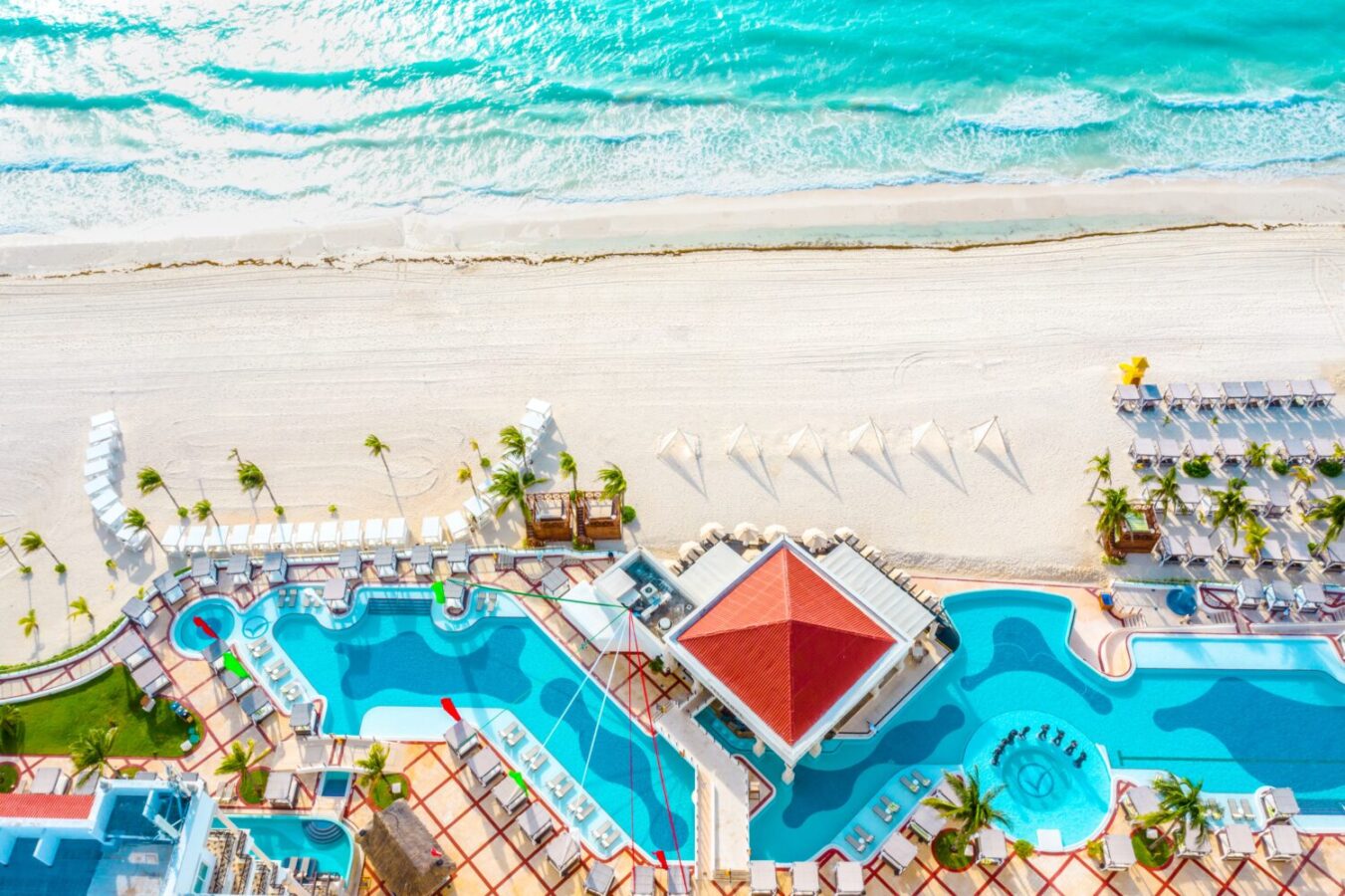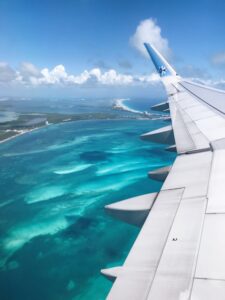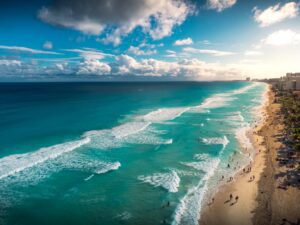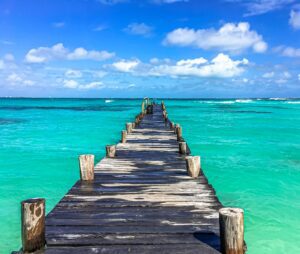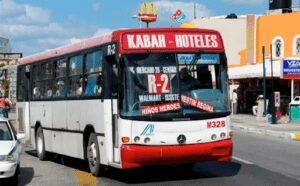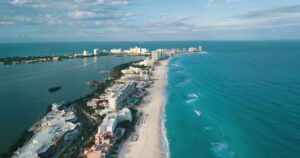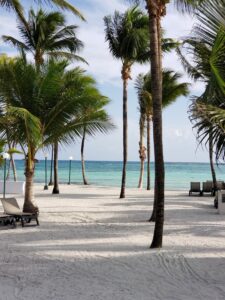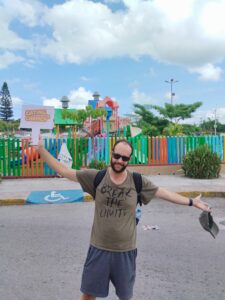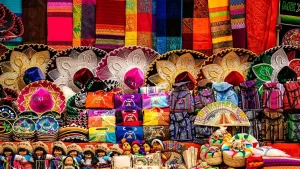For over 50 years Cancún has been, without a doubt, one of the favorite vacation sites for people from all over the world. The success of this city opened the way for tourism to more cities and towns in the Riviera Maya and Yucatan like Playa del Carmen, Tulum, Akumal, and Puerto Morelos.
A city with a little over 1 million inhabitants with around 42k Hotel rooms and counting. Year after year Cancún’s International Airport receives millions of international tourists, and I know that if you are not already in those millions, you’ll soon be part of the millions to come. That’s why I’ll give you a Quick Guide with all you need to know when traveling to this popular destination.
Photo by Reiseuhu
A BIT OF HISTORY
Approximately 5,000 years ago off the coast of Quintana Roo, a large dune in the shape of a “7” was formed, known as Punta Cancun-Nizuc, over the years this dune joined the mainland naturally creating the Nichupte Lagoon. Bordered by mangroves, it has 4,774 hectares of water surface and more little lagoons like Laguna del Amor, Laguna Bojorquez, and the Río Inglés with hidden freshwater cenotes and species of all kinds.
In its early beginnings, the island of Cancun was occupied by a few fishing travelers and eventually, families of Mayan origins came to settle. The Mayans named their populations about what was most abundant in the area or to some geographical characteristic of the region.
The word “KAaan – K’ Uu” “Kaank’ Un” or “Kaan Kuum” according to some anthropologists can be understood as “Place of the Golden Snake” or “Nest of Snakes”. The meaning can change according to the pronunciation or meaning of the words, whether relating gold to the rays of the Sun, the snake to the wavy shape of the island, or the fact that there are at least 46 species of snakes in the region. The idea that the Island of Cancun could have been a sacred place can be confirmed, justifying the numerous places of worship found since for the Mayans of Toltec descent the figure of a snake was a deity, and the cult of Kukulkan, the Feathered Serpent that is found in Chichen Itza, a city that had political, economic and cultural control of the entire peninsula. Furthermore, we cannot ignore the two snake-shaped heads at the entrance to the El Rey archaeological zone and the always-present image of a snake on the headdress of Ixchel, goddess of the moon and fertility.
Centuries later, in the 1960s, with the huge success of tourism in Acapulco, the Mexican government took on the task of searching the entire coast of Mexico for more potential areas to exploit as a beach destination. Towards the end of 1968, Mexican architects conceived the Cancun Island Project based on two areas: the hotel zone on the island, and the service city on the mainland, made up of a set of housing mega blocks called manzanas, with public spaces Downtown and shops and other services all around.
By the early 70s, they began to assemble most of the basic infrastructure, and then build the first hotels in Quintana Roo. At the very beginning, almost no one trusted the project but eventually, it exceeded expectations and the city as well as its population began to grow exponentially to what it is today.
HOME OF THE ENDLESS SUMMER
From the 365 days of the year in Cancun, there are 243 mostly clear days. Cancun enjoys a semi-tropical climate and you can generally enjoy the best Cancun weather if you travel between December and March, but keep in mind that the near-perfect weather also attracts large crowds. Humidity tends to be high for most of the year with the presence of a few cooling breezes. While the annual average is only 78°F, it is not unusual for summer temperatures to reach 95°F with July being the hottest month. Vacationers should be aware that in early Fall Cancun experiences greater storm activity with wetter conditions and there is a greater chance of hurricanes between September and October and temperatures typically reach 80°F.
Photo by Andreas M
TRAVEL TRANSPORTATION AT CANCUN
The vast majority of flights from the United States, Canada, and Europe arrive at the Cancun International Airport but it is important to know that Mérida and Cozumel also have an international airport and the Tulum airport is currently under construction.
The following transportation options will be very useful in most of the territory of the state of Quintana Roo and the Yucatan Peninsula.
To leave the Cancun airport and get to your accommodation either in Cancun Hotel Zone or Cancun Centro (City) you can consider the ADO bus company which also has a variety of routes to many nearby towns such as Playa del Carmen or Tulum, then you may have to take a taxi right there at the bus terminal that will take you to the exact address and the price will be equivalent to the distance from your destination. Now, if you come with a large group or with a lot of luggage, private cars or taxis are a more comfortable option or perhaps more convenient if you plan to tour both the Island of Cancun and nearby towns and beaches.
Although they have a reputation for being the most expensive transportation in the city, taxis are a good alternative to visit specific points of interest in the city of Cancun such as beaches, restaurants, and amusement parks, or if you are in a hurry to get somewhere, or after a long night at the clubs. Rates must be consulted in advance, either with the driver before boarding the unit or with a concierge from your hotel. It is recommended to pay in pesos and always carry small bills or coins.
Source vivecancun.com
The urban bus lines are the most direct and affordable way ($3 USD tops) to travel to any point in the city and the Hotel Zone, these buses drive throughout Kukulcán Boulevard, the main avenue on the coast. They have stops in front of most hotels, as well as at the busiest beaches, restaurants, nightclubs, and shopping centers. They are organized by routes, marked with the letter “R” and a number, R-1: takes you to the ADO bus station, and R-2: takes you to the famous Mercado 28 and Walmart.
CANCUN HOTEL ZONE
The hotel zone of Cancun is the heart and main artery of this important tourist center in Mexico. Besides more than 200 hotels and resorts to choose from, you will also find many activities, like shopping malls, museums, and even some Mayan ruins. It is framed on one side by the Caribbean Sea and on the other by the Nichupté Lagoon. At night, the vibe in Cancun changes a little, as the clubs in the hotel zone begin to come to life, and music is heard everywhere in the area. Shows, drinks, and parties can be seen everywhere in places like Coco Bongo, Hard Rock, and Mandala, among many others.
Photo by Gerson Repreza
CANCUN BEACHES
Stating the obvious, the main attraction of Cancun is its beaches, most of which have large stretches of white sand where you can lie down and sunbathe, eat in one of the restaurants around, and spend the whole day in the sea, snorkeling, swimming, or surfing the beaches. waves on the jet skis, so put on your visors and bathing suit to visit each one of them!
Photo by Jose
CANCUN CENTRO
Escape from the “touristy” hotel zone to learn a little more about Mexican culture, delight in traditional dishes from the region and the entire country and discover the best-kept secrets of this City.
To get to Cancun Centro from the Hotel Zone you can take route R2 or R1 or any bus that has the word DOWNTOWN or Centro written in the window and just ask the driver where you want to get dropped off.
If you plan a walk through Cancun Centro, you can start at the iconic Glorieta del Ceviche (The Ceviche roundabout) which is located at the junction of Avenida Tulum on the Cancún-Playa del Carmen highway, and Av. Coba, which in the hotel zone is the Boulevard Kukulkan, its official name is North-South Dialogue Fountain, but nobody uses it.
LAS PALAPAS PARK
Continue your tour in Parque las Palapas known as the most traditional part of Cancun, opened in 1971. On weekends and certain dates, it is possible to enjoy the cultural presentations that take place on the stage or the esplanade and you can even practice your dance steps when there are danzón or salsa sessions. It is ideal for walking with the little ones and playing in the children’s play area. It is surrounded by hotels, hostels, and bars to hang out. Inside the park, you will find carts selling all kinds of food and desserts such as marquesitas, ice cream, esquites, as well as Mexican traditional local restaurants.
Photo by Eating With Carmen Food Tours
MARKET 28
In this market, you will find over 200 shops selling Mexican crafts made by local artists. If you negotiate a little, you can get a good discount on ceramic products, leather goods, painted and handmade pieces, Lucha Libre masks, tequilas, shirts, magnets, and even silver jewelry. Many restaurants and stalls sell traditional Mexican food, seafood, spices, and condiments from the region. If you’re interested in visiting Mercado 28 with fewer crowds, arrive first thing in the morning or in the later hours when the market is less trafficked. Locals recommend bringing cash to pay vendors with, and not using a credit or debit card.
If you’re staying in the Cancun Hotel Zone, take the bus with route R-2 and Market 28, and keep walking for a few minutes just a few blocks further up the street, where you’ll see a large archway and signs for Mercado 28. When you’re ready to leave Mercado 28, follow that same path back to your bus stop to return to the Hotel Zone.
source topadventure.com
That’s right folks, there is more to Cancun Island beyond its beautiful beaches, in every corner you will find the remains of the Mayan civilization, activities for the whole family, and typical dishes of the region, no wonder so many tourists keep coming back each year, to their home away from home.
See you on your next visit.
Your trusted travel blogger.
-Abbey.

